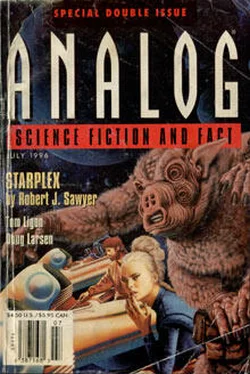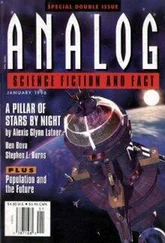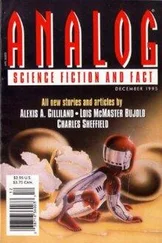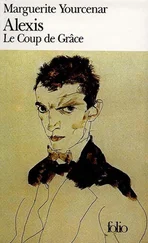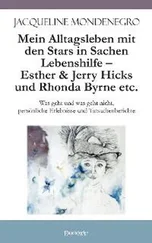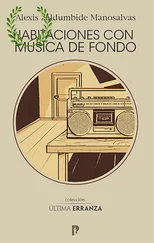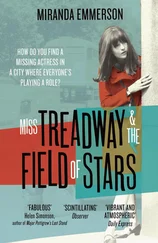Alexis Latner - Threat of Stars at 912 Main
Здесь есть возможность читать онлайн «Alexis Latner - Threat of Stars at 912 Main» весь текст электронной книги совершенно бесплатно (целиком полную версию без сокращений). В некоторых случаях можно слушать аудио, скачать через торрент в формате fb2 и присутствует краткое содержание. Год выпуска: 1996, Издательство: Dell Magazines, Жанр: Фантастика и фэнтези, на английском языке. Описание произведения, (предисловие) а так же отзывы посетителей доступны на портале библиотеки ЛибКат.
- Название:Threat of Stars at 912 Main
- Автор:
- Издательство:Dell Magazines
- Жанр:
- Год:1996
- ISBN:нет данных
- Рейтинг книги:4 / 5. Голосов: 1
-
Избранное:Добавить в избранное
- Отзывы:
-
Ваша оценка:
- 80
- 1
- 2
- 3
- 4
- 5
Threat of Stars at 912 Main: краткое содержание, описание и аннотация
Предлагаем к чтению аннотацию, описание, краткое содержание или предисловие (зависит от того, что написал сам автор книги «Threat of Stars at 912 Main»). Если вы не нашли необходимую информацию о книге — напишите в комментариях, мы постараемся отыскать её.
Threat of Stars at 912 Main — читать онлайн бесплатно полную книгу (весь текст) целиком
Ниже представлен текст книги, разбитый по страницам. Система сохранения места последней прочитанной страницы, позволяет с удобством читать онлайн бесплатно книгу «Threat of Stars at 912 Main», без необходимости каждый раз заново искать на чём Вы остановились. Поставьте закладку, и сможете в любой момент перейти на страницу, на которой закончили чтение.
Интервал:
Закладка:
Threat of Stars at 912 Main
by Alexis Glynn Latner

Illustration by Dell Harris
Michael Martin, the photorealist, is alive and well and painting in Houston, and nearing the completion of his best work to date. That’s a great capsule bio, isn’t it? Especially considering the rest of the whole truth. He nearly ended up either dead or disappeared off the face of the Earth.
It was a close call as to which outcome it would be. And the irony is, I wasn’t looking for a new painting idea that night. Or for trouble either. It all just happened out of the clear, black, night sky.
Thursday night, July 22. The art opening was going great at first. My paintings had a white wall to themselves, with track lighting that showed them off to best effect. The rest of the group show at the Hart Gallery was strong, too. We had Thaddeus Cooper’s Afro-American-motif collages, Tam Adkins’s surrealist paintings, sculpture from the studio of Ben Glaze, and drawings in charcoal and crayon by Roger Easterling. There was only one mistake in the show—a messy, three-dimensional, mixed-media piece, situated in a corner between Thaddeus and Roger, so I wasn’t sure which of the two was responsible. At least it wasn’t dragging my stuff down. I’d already spoken with a potential buyer, a lawyer with offices downtown. He sounded serious about buying my painting, “Bayou Gothic Skyscraper.”
Then Roger came up to me. Besides having art in the show, he was the gallery owner’s assistant, and looked artistically official in tuxedo and mint-green, ruffled silk shirt. Roger was handing out drinks and news. “Guess what? A Miguel Herrera painting has disappeared from the Artes Magnificos Gallery! White or red?”
My name, Michael, is the Anglophone equivalent to that of Mr. Herrera, who’s a local photorealist with a national reputation, and my idol. So Roger’s news got my attention. I accepted white wine in a plastic cup and felt suddenly, absurdly worried.
It was the busy Brownian motion of a well-attended opening in here tonight, with people uniformly dispersed throughout the gallery space. Except the artists clustered around Roger. “Another art theft? No foolin’!” exclaimed Thaddeus Cooper. “That makes five in five days.”
“Nights,” Roger corrected. “The thefts all happened in the middle of the night.”
“Does what’s been stolen have anything in common?” I wanted to know.
“Works in five different media and styles that range from Baroque to avant-garde,” Roger answered, “are missing from the Fine Arts Museum, the personal studio of Victor Leibrock, and two commercial galleries.”
“Any of us might be next,” said Thaddeus in a droll tone.
I laughed. But deep down, I felt threatened. There’s nothing like not having made it quite yet. Miguel Herrera could afford to lose a painting; his go for five figures each. But I had everything to lose. At least that’s how I felt, imagining what if my “Bayou Gothic” vanished off the wall of the Hart Gallery.
“The art theft wave is why I’m playing hostess,” Roger said. “Annika’s at the gallery owners’ association emergency meeting. I did the last of the setup without her.”
Tam Adkins, the painter who’d recently moved to Houston, asked, “Do gallery owners here have an association? In Atlanta they cooperate about like a sackful of cats.”
“Same here, but they associated last spring when City Council considered zoning restrictions such that galleries in upscale residential neighborhoods would have been zoned out of business. And now the art theft wave has them meeting again. Welcome to Houston,” Roger said brightly.
Elsewhere in the gallery, some art professors were having a loud discussion. Standing around the mixed-up-media piece, the academics argued with each other about its relevance to Derrida and deconstruction.
“Do excuse me. I have patrons to attend to.” Roger glided away toward the professors who, while arguing over the mixed-media piece, weren’t looking at it, and the art critic and photographer from the newspaper, who were.
Thaddeus nudged me. “Roger’s going to get some press with that mixed-shit piece of his.”
So it was Roger’s. I should have known. “Maybe the art thief will read the review and come steal it,” I muttered peevishly.
The profs and the art critic drifted away from the mixed media, but a gaggle of glitterati replaced them. Meanwhile, nobody hovered in front of my work.
I do photorealism. Huge paintings of city scenes. I prowl the streets looking for interesting angles; I’ve been known to lie in wait until some combination of Sun and shadow, or mist and moonlight, gives a unique lighting effect to a skyscraper. In other words, I work hard to understand and to depict the reality of the stone, steel and glass bones of this city.
And the art-opening crowd preferred the messy little mixed media. Feeling faintly green, just like the wine in my cup tasted, I went over to take a close critical look at Roger’s folly.
Importantly placed on a display pedestal, it incorporated a dayglo sneaker, a giant plastic cockroach, wads of crumpled paper and used bubble gum, and a green plastic comb. It looked like what you’d find on top of a clogged storm sewer after a downpour, balled up into a mess about two feet across, and stuck together with orange paste looking suspiciously like the gasket goop that mechanics use.
Thaddeus was right. It was shit-awful. To top it all off, the thing was titleless. I started to scan the floor in case the title card had fallen off, but a girl in a clingy blue dress informed me, “We already looked. There isn’t a tide card. Having no artist and no title is such a provocative statement.”
“Uh-huh.” In my own opinion, the lack of a title card was excessively coy.
With eyes to match her dress, she gave me a shimmering blue gaze. “Are you the artist?”
She was an art babe, one of the attractive young women who are fascinated by the art scene, don’t earn enough money to collect art, but do have charms wherewith to collect male artists. As it happens, art babes aren’t the type for me. I said, “No, this is a Roger Easterling.”
She wasn’t Roger’s type either, since she was the wrong gender for him. But he deserved the trouble of fending her off, after inflicting his Mixed Media on the show.
By now I was brooding about the whole fine arts business and the way it pandered to tasteless, moronic money. About my eventual success as a painter, or lack thereof. And inside all of the brooding a thorn of irrational fear was sticking in my side. Suppose “Bayou Gothic” was the one that would knock the critics’ socks off, that could implant the seeds of a real reputation for me in the art world, but got stolen instead?
It was distraction time. Before I could wind myself up any tighter and completely ruin my mood for the opening, I went over to check out Tam Adkins’s work.
One of Tam’s paintings fascinated me. Measuring a couple of feet long on each side, it was half of the size of what I usually do, but exquisite. She had painted computer chips and electronic parts and laboratory glassware—with light reflections rendered just right—a melange of technological artifacts, assembled in such as way as to look like a portrait of a man. It alluded to a famous classical painting in which the human portrait was an assemblage of fruit. But it accomplished more than mere allusion. “Hey, Technology Number 7’ is great, including your technique. Masterful,” I told her.
Tam responded with a bright smile.
Читать дальшеИнтервал:
Закладка:
Похожие книги на «Threat of Stars at 912 Main»
Представляем Вашему вниманию похожие книги на «Threat of Stars at 912 Main» списком для выбора. Мы отобрали схожую по названию и смыслу литературу в надежде предоставить читателям больше вариантов отыскать новые, интересные, ещё непрочитанные произведения.
Обсуждение, отзывы о книге «Threat of Stars at 912 Main» и просто собственные мнения читателей. Оставьте ваши комментарии, напишите, что Вы думаете о произведении, его смысле или главных героях. Укажите что конкретно понравилось, а что нет, и почему Вы так считаете.
